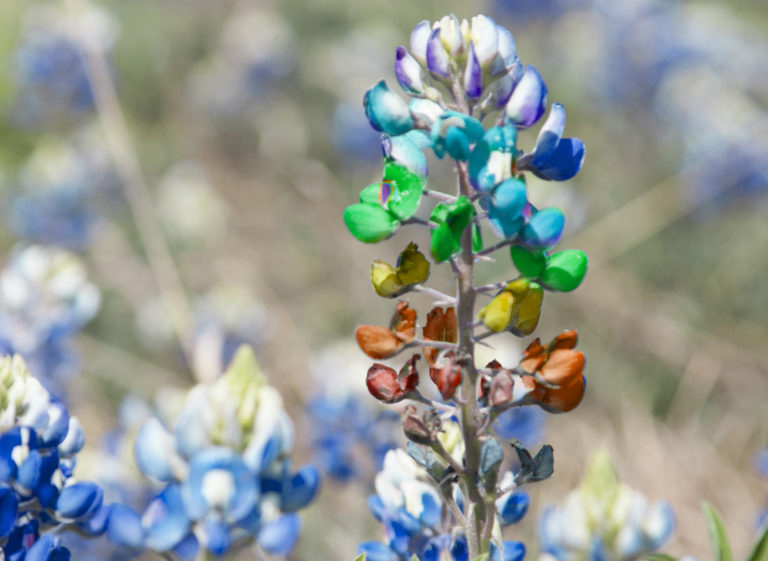|
New Type of Bluebonnet Discovered in the Texas Hill Country
By Jason Weingart | March 20, 2017
Everyone knows bluebonnets come in colors besides blue, but horticulturists were shocked to receive reports of a multi-colored variety found growing in the Hill Country. Experts from Aggie Horticulture verified the wildflower is indeed a variety that has never been seen before and named it the “Rainbow bluebonnet.”
Amazingly, its petals transition their colors the way the gradient in a rainbow does. Experts are unsure if this mutation occurred naturally or was created by someone, but nevertheless, we now have a new color of wildflower to look out for.
Be on the lookout for the newly discovered “Rainbow Bluebonnet.”

Photo: Jason Weingart
|
Got ya! This is an April Fool’s joke. But while there is no rainbow version, bluebonnets do come in different varieties. Texas Cooperative Extension horticulturists worked with seed producers, growers, and farmers to domesticate the bluebonnet.
In 1982, Texas naturalist Carroll Abbott, or “Mr. Texas Bluebonnet”, came up with the idea to create the Texas flag out of bluebonnets for the 1986 Texas Sesquicentennial. His proposal has grown to involve thousands of people, created a multi-million dollar agricultural industry and generated unthinkable publicity for Texas A&M.
Some pretty incredible bluebonnet breakthroughs because of these efforts include transplants, rapidly germinating, chemically scarified seed, and early-blooming plant types. These were needed to create the state flag with different colored bluebonnets.
A bluebonnet is called a “bluebonnet” no matter the color. If a bluebonnet is white, it’s simply a white bluebonnet, not a whitebonnet. Not-so-bluebonnets have always existed in nature. To proliferate different colored bluebonnets, botanists across the state set out to find seeds from white and pink bluebonnets. By collecting seeds from only these colors, natural selection was sped up. The different colors of bluebonnets are:
The only things needed to be done with this color was to enhance seed germination and formulate a commercial production technique which would ensure a dependable seed supply.
Finding a white bluebonnet feels a lot like finding a four leaf clover. They stick out amongst the blues. Consequently, many knew where white populations existed.
Abbott had roamed the bluebonnet fields of Texas his entire life and only found three pink bluebonnet plants. A large population of them was discovered within the city limits of San Antonio. Then Abbot’s dream was able to become reality. Once the pink bluebonnet was purified, it allowed the development of the red and maroon bluebonnets.
In honor of D. Greg Grant, who was the first to recognize the Lupinus harvardii as a cut flower. The Bexar County Master Gardener work crew is instrumental in stocking seeds which will eventually enable acreage of the red and maroon bluebonnets to be grown. The red and maroon colors would probably vanish without their efforts.
“Henry’s Red” is in honor of the late Mr. Henry Verstraeten, a San Antonio vegetable grower, who grew and insured the seed increase of each Lupinus texensis color variant in his small retirement garden.
A selection of Texas bluebonnet known for its unusual flower color in several shades of lavender. The selection was made originally by Dr. Jerry Parsons
Due to the efforts of many people, one day Texans may think of a lot of different colored flowers when they hear the word “bluebonnets.”
Sources:
Aggie Horticulture
Jerry Parsons
|



